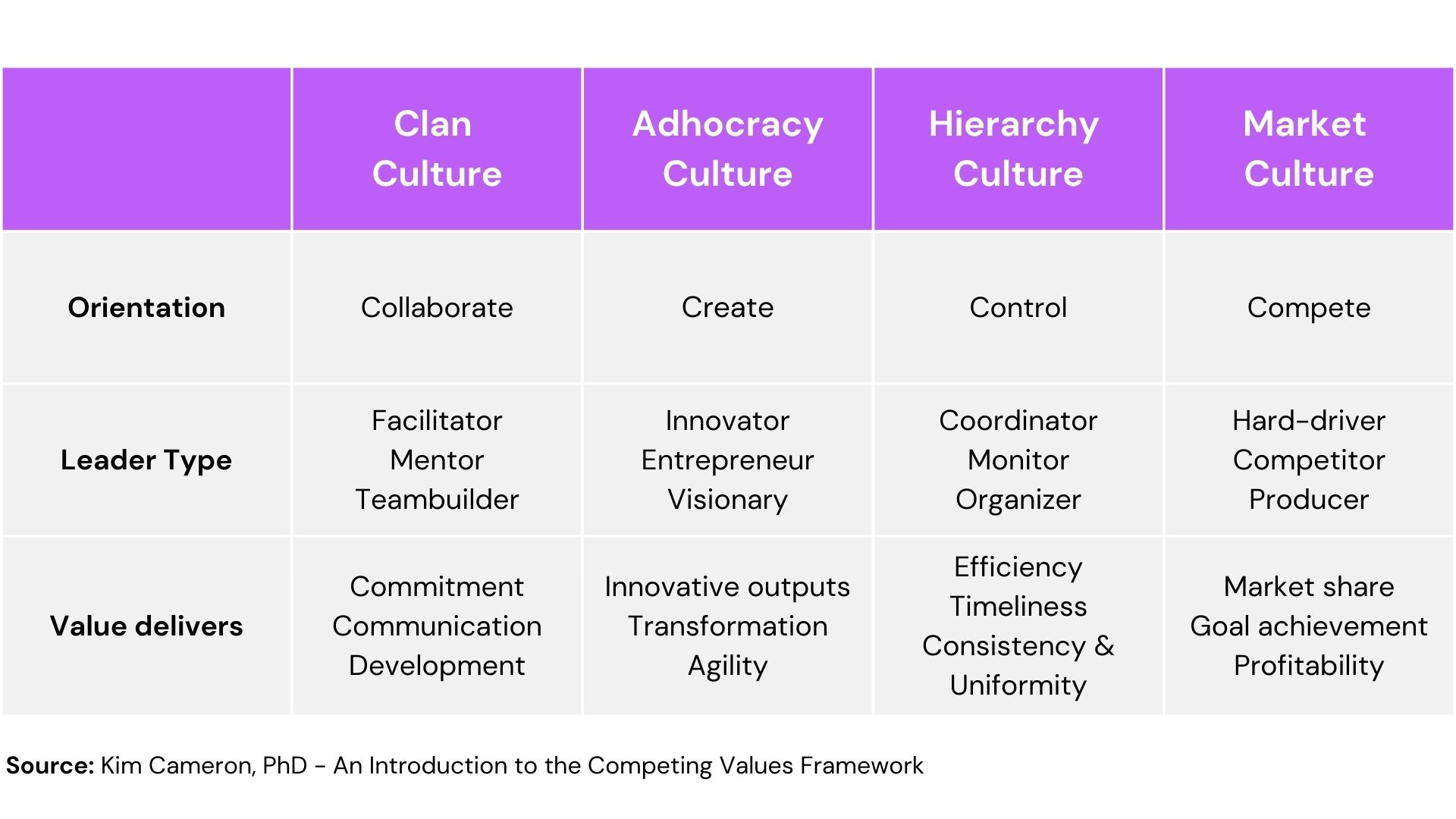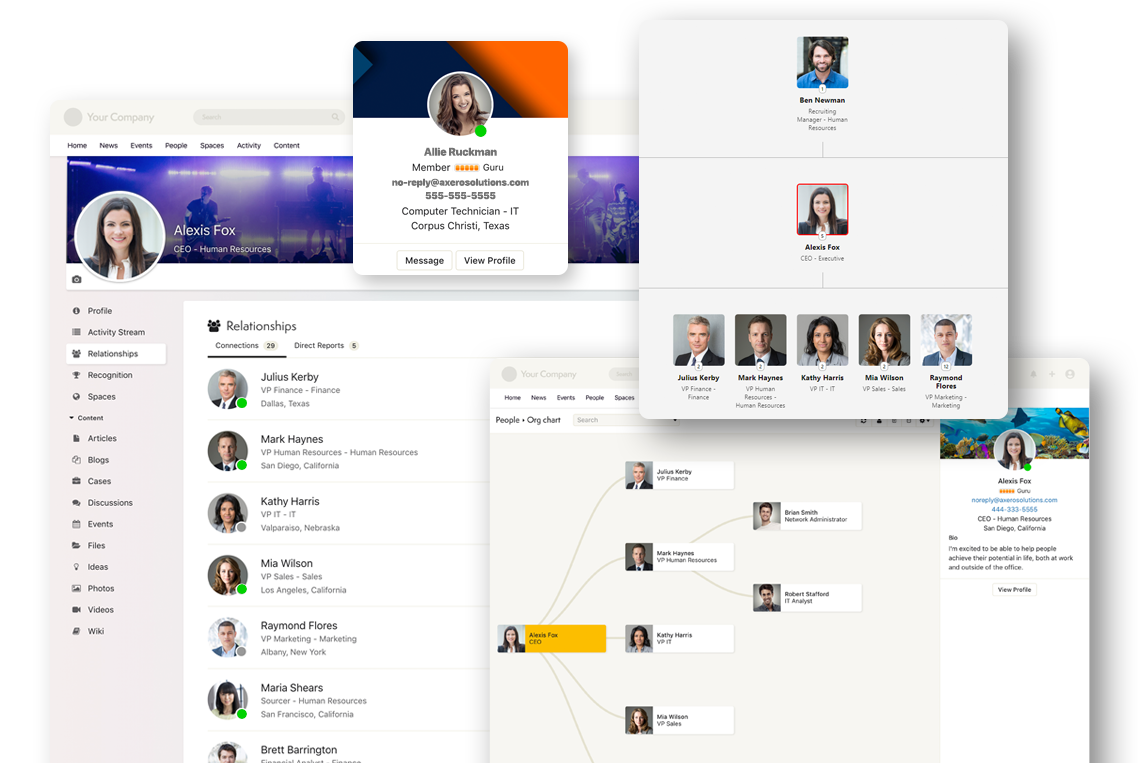The culture of a company has a direct impact on employee satisfaction, productivity, and overall business success. Knowing how to improve company culture is crucial for any organization aiming to thrive in today’s competitive business environment.
Gallup research shows that just 23% of US employees strongly agree that they can apply their organization’s values to their work on a daily basis, and only 27% strongly agree that they believe in their organization’s values. The question is, where did we go wrong?
How to create a work environment that fosters a positive and engaging company culture is a question that demands exploration. Let’s dive into how we can improve workplace culture and build an organization where employees feel inspired, empowered, and eager to contribute their best to achieve common goals.
Defining company culture
Company culture, or organizational culture, is the lifeblood of any organization.
It is the set of shared values, beliefs, attitudes, practices, and behaviors that define how employees interact with each other and with stakeholders. The organizational culture shapes the work environment and influences the whole employee experience: from employee engagement and job satisfaction to employee retention and talent acquisition.
Your company’s core values, vision, and mission are the building blocks of your culture. They define why your organization exists, what it aims to achieve, and how it wants to do it.
Before you go about improving your company culture, you need to have a clear understanding of what your company culture is and where it stands. You can achieve this by conducting internal surveys, interviewing employees, observing behavior patterns, and analyzing existing policies. Feedback and perceptions from all levels of the organization will help you identify the strengths and weaknesses of your current company’s culture.
4 types of company culture
While there are many different types of corporate culture out there, the Competing Values Framework (CVF) developed by Kim Cameron and Robert Quinn are widely referred to and discussed when it comes to organizing and understanding organizational culture. In fact, CVF has been identified as one of the 40 most important frameworks in the history of business*.
Four organizational cultures were defined: Clan, Adhocracy, Hierarchy, and Market, describing the core approaches to thinking, behaving, and organizing associated with human activity.
Let’s look at them one by one.
1. Clan culture: Do things together
A collaborative and nurturing environment where employees share a sense of family. Clan culture emphasizes teamwork, loyalty, and traditions, with leaders acting as mentors. Cohesion and employee wellbeing are valued, promoting open communication and a strong commitment to collective goals.
Google is known for its clan culture, fostering a family-like atmosphere where employees are encouraged to collaborate, share ideas, and support each other. Google offers various perks and amenities to create a sense of community, and its leaders often engage with employees in open forums.
2. Adhocracy culture: Do things first
A dynamic and innovative atmosphere that prioritizes risk-taking and entrepreneurial spirit. Adhocracy culture encourages quick decision-making and experimentation to seize opportunities. Flexibility and adaptability are key to fostering creativity and individual initiative to stay ahead of the competition.
The multinational conglomerate 3M is well-known for its adhocracy culture. Employees are given time and resources to pursue their own innovative projects, leading to the creation of products like Post-it notes and reflective materials.
3. Hierarchy culture: Do things right
A structured and formal organization with clear authority and well-defined roles. Hierarchy culture focuses on rules, processes, and efficiency. Decision-making typically resides with top management, ensuring a methodical approach to tasks and maintaining stability and control within the organization.
Many government agencies and departments worldwide operate with a hierarchy culture. A government intranet can support these bureaucratic structures by ensuring clear lines of authority and facilitating the implementation of rules and regulations that dictate procedures and decision-making processes.
4. Market culture: Do things fast
A competitive and results-oriented setting focused on achieving goals. Market culture strives for performance, customer satisfaction, and profitability. Employees are driven to excel, and leaders are strategic and visionary, continuously seeking growth and success in the market through innovation and swift action.
The fast-food giant McDonald’s thrives on a market culture, emphasizing speedy service, efficiency, and consistent quality across its global chain of restaurants to cater to the fast-paced demands of customers in the fast-food industry.
Common company culture pitfalls
If it comes to the point where you and your fellow team members need to sit down and look into each other’s eyes to figure out where your company culture went wrong, you might want to see if these following pitfalls ring a bell.
Lack of clear values and vision: When a company fails to establish clear values and a strong vision, it can lead to confusion among employees about the organization’s purpose and direction.
- Poor leadership: Ineffective or toxic leadership can significantly impact company culture. Leaders who don’t embody the values they promote, fail to communicate effectively, or don’t prioritize employee wellbeing can create a hostile work environment.
- Absence of employee engagement: Companies that don’t prioritize employee involvement and engagement often experience disengaged, unmotivated, and unhappy employees.
- Communication issues: Poor communication channels can lead to misunderstandings, misalignment, and a lack of transparency, imposing a culture of mistrust.
- Unhealthy competition: Excessive competition without collaboration can create a cutthroat environment which leads to a toxic culture.
- Resistance to change: Companies that resist adapting to changing market conditions and employee needs can stifle innovation and growth and hinder a positive workplace culture.
- Inequality and unfair treatment: A company culture that doesn’t treat employees fairly or equally, such as discrimination based on gender, race, or other factors, can lead to resentment and negatively impact morale.
- Lack of work-life balance: If a company doesn’t support work-life balance, it is about time employees experience burnout, impacting their productivity and wellbeing.
- Ignoring employee feedback: Companies that dismiss or ignore employee feedback, suggestions, and concerns may face a disengaged workforce and miss out on valuable insights.
- Rewarding toxic behavior: Recognizing and rewarding toxic behavior, such as promoting aggressive competition at the expense of teamwork, can poison company culture.
So how to improve company culture?
Once you see the root cause(s) of the challenges you face, you can take appropriate approaches and strategies on how to improve company culture.
Here are 10 ways to build a strong company culture.
1. Establish clear core values
It sounds like the easiest thing, but many companies, even big ones, often overlook the importance of having clear core values and missions, even though they define the company’s identity and guide decision-making. Align company practices, policies, and behaviors with these values to create a strong sense of purpose and unity among employees.
If you need more convincing, 87% (nearly 9 in 10) of US employees feel motivated to do their best work when they have clear goals and expectations.
2. Create a positive and open environment
An open, positive work environment encourages employees to voice their opinions, share ideas, and engage in constructive discussions and feedback loops. You also want to maintain employees’ psychological safety, as damaging it could lead to negative consequences, possibly pushing them to a breaking point or causing emotional distress. In fact, 89% of employees believe business leaders are responsible for creating a safe and respectful workplace. This can be achieved by promoting transparency, supporting open dialogue, and treating all employees with respect and fairness.
3. Promote employee engagement and participation
Organizations, communities, societies, and even families all have unique cultures, which are often influenced by the people who are part of them. Your engaged employees are essential for creating and shaping culture. Encouraging employees to participate in decision-making processes, involving them in project planning, and giving them opportunities to contribute their skills and knowledge can boost their sense of belonging and commitment.
4. Emphasize continuous learning and development
Continuous learning and development opportunities can significantly improve workplace culture. You can cultivate a culture of growth and improvement by offering professional development programs and providing opportunities for mentorship, skill-building, and career advancement. When you show a commitment to their growth, not only does it enhance their skills, but it also boosts their morale and loyalty to the company.
5. Embrace diversity and inclusion in the workplace
Diversity and inclusion are not just buzzwords; they are fundamental pillars of a healthy and thriving organizational culture. By celebrating differences and ensuring equal opportunities for all employees at all levels of the organization, you build a culture of acceptance and mutual respect.
6. Invest in leadership development
As leaders grow and evolve, so will the organization and its culture. Leaders play a pivotal role in shaping and maintaining company culture; they set the tone for the organization, model the desired behaviors, and have the power to influence employees’ attitudes and behaviors.
7. Encourage collaboration and knowledge sharing
When all employees in a workplace are aligned and focused on working towards a shared goal, there shouldn’t be room for unhealthy competition or gatekeeping. Instead, establish platforms or forums where employees can share their knowledge and expertise. Cross-functional projects can also build strong relationships among team members and break down silos.
With modern intranets like Axero, you can leverage a knowledge base to facilitate knowledge sharing and collaboration among employees. As employees contribute insights, experiences, and solutions to common challenges, a culture of collaboration is naturally and collectively strengthened.
8. Celebrate achievements and milestones
Recognize and celebrate the accomplishments of individuals and teams. Publicly acknowledge their efforts and contributions through awards, announcements, or social events. Celebrations help foster a sense of camaraderie and motivate employees to strive for excellence. Indeed, a Salesforce research shows 84% of US knowledge workers find employee recognition and gratitude from their team valuable.
9. Promote work-life balance and employee wellbeing
Promoting work-life balance can lead to happier, healthier, and more productive employees. Flexible work arrangements, which a McKinsey survey reports as a top three motivator for US employees finding a new job*, are one of many ways to achieve this.
Invest in employee wellbeing initiatives, such as wellness programs, mental health support, and access to counseling services. Not only does this improve their overall health, but it also enhances their productivity at work. It is also essential to encourage employees to take breaks and vacations to avoid burnout and improve overall wellbeing.
10. Leverage technology
Technology can be leveraged and harnessed to create a positive and productive work environment in many ways. Digital tools can enhance communication, promote collaboration, support flexible working arrangements, and provide opportunities for learning and development.
This does not mean purchasing software left and right; investing in tech infrastructure should be done in a thoughtful and intentional manner. We might be biased, but Axero’s award-winning intranet platform allows you to communicate, collaborate, distribute knowledge and information, develop strong company culture, and much more!
Your starting point for company culture.
A strong company culture brings numerous benefits, including increased employee satisfaction and retention, improved productivity, better decision-making, and a stronger brand reputation. However, improving company culture can be challenging and does not happen overnight. It requires time, commitment, and consistent efforts.
Take that first step, and let the journey towards a remarkable company culture begin.



















 info@axerosolutions.com
info@axerosolutions.com 1-855-AXERO-55
1-855-AXERO-55


